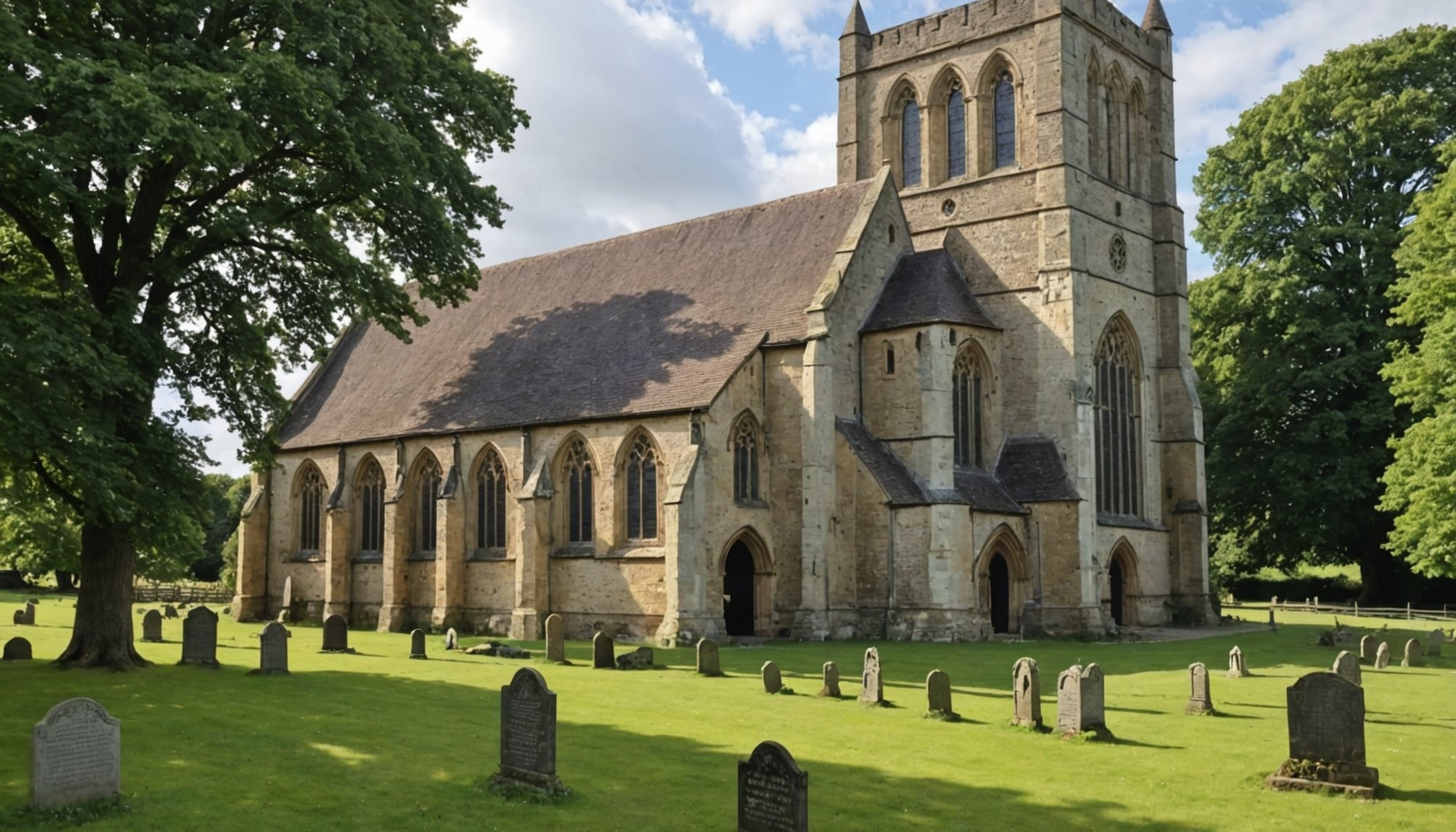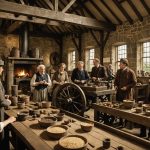Experience the charm of England’s countryside through its stunning Saxon churches. Guided tours offer a unique glimpse into the rich history and architectural beauty of these medieval treasures. Discover hidden stories, intricate designs, and the communities that cherish these landmarks. Whether you’re a history buff or a curious traveler, this guide will help you plan your perfect adventure. Step outside the ordinary and explore the captivating legacy of Saxon churches waiting just for you.
Overview of Historic Saxon Churches
Historic Saxon churches are a testament to the rich architectural heritage found in the English countryside. These churches, dating back to the early medieval period, are among the oldest surviving structures in England. Saxon architecture is characterized by its use of simple, robust designs that reflect the era's construction techniques and materials.
Also to see : Top Spots to Experience Stunning Autumn Foliage in the Scottish Highlands
Historical Context of Saxon Architecture
The Saxon period, spanning from the 5th to the 11th centuries, was a time of significant change and development in England. During this era, Saxon churches were built using local materials, such as timber and stone, which have remarkably withstood the test of time. Their construction often incorporated elements from earlier Roman structures, showcasing a blend of influences.
Key Features of Saxon Churches
Distinctive features of these churches include thick walls, small windows, and round arches. The use of long-and-short work—a technique involving alternating stone sizes—adds to their unique appearance. Towers, often added later, are another prominent feature, serving both religious and defensive purposes.
Also to see : Top UK Spots for a Spectacular Summer View of the Perseid Meteor Shower
Importance of Preserving These Historical Sites
Preservation of these historic sites is crucial for maintaining the cultural and architectural legacy of the English countryside. Protecting these churches ensures that future generations can appreciate their historical significance and the stories they hold.
Recommended Guided Tours
Exploring Saxon churches through guided tours offers a unique opportunity to delve into England's rich historical tapestry. These tours are designed to provide an immersive experience, bringing the architectural and cultural significance of these ancient structures to life.
Overview of Popular Guided Tours
Several popular guided tours focus on historic Saxon churches. These tours often include visits to multiple sites, allowing participants to appreciate the variety in Saxon architecture. Knowledgeable guides provide insights into the history and construction techniques of each church, enhancing the overall experience.
Notable Tour Operators Specializing in Saxon Churches
Certain tour operators have carved a niche in offering specialized Saxon church tours. These operators are known for their expertise and deep understanding of the historical context. Their tours are meticulously planned to ensure a comprehensive exploration of the most significant Saxon churches.
Comparison of Different Tour Packages and Experiences
Tour packages vary in duration and depth, catering to different interests and schedules. Some tours focus on a broad overview, while others offer in-depth exploration of specific sites. Comparing these packages allows potential participants to choose experiences that best suit their interests, ensuring a fulfilling journey through England's Saxon heritage.
Detailed Itineraries for Exploring Saxon Churches
Embarking on a journey to explore Saxon churches is a captivating experience. Whether you're planning a day trip or a multi-day adventure, having a well-thought-out itinerary can enhance your exploration.
Sample Itineraries for a Day Trip
For those with limited time, a day trip itinerary can offer a concise yet enriching experience. Start your morning with a visit to a local Saxon church known for its unique architecture. Spend a few hours exploring its historical features and learning about its significance. Follow this with a leisurely lunch at a nearby village, soaking in the local culture. In the afternoon, visit another church to appreciate the variety in Saxon design.
Multi-Day Travel Plans for In-Depth Exploration
For a deeper dive, consider a multi-day itinerary that allows for a more comprehensive exploration. Begin your journey by visiting a cluster of Saxon churches, each showcasing distinct architectural styles. Allocate time for guided tours to gain insights into the historical context and construction techniques. Spend evenings in charming local accommodations, enjoying regional cuisine and hospitality.
Suggested Routes and Timing for Optimal Visits
Planning your route is crucial for maximizing your experience. Consider starting with churches located closer together to minimize travel time. Aim for early morning or late afternoon visits to avoid crowds and enjoy a more intimate exploration.
Historical Significance of Saxon Churches
Saxon churches hold a profound historical significance within the tapestry of English heritage. These ancient structures not only serve as places of worship but also as monuments to the cultural heritage of England. Their presence in local history is marked by their role as community centers, where significant events unfolded and local governance was often discussed.
The influence of Saxon churches extends beyond their immediate communities, impacting broader English culture and architecture. Their church history showcases a blend of styles and techniques that have informed subsequent architectural developments. The robust, simplistic designs of Saxon churches laid the groundwork for future architectural innovations in England.
Throughout history, Saxon churches have been associated with noteworthy events and figures. Many of these churches witnessed pivotal moments, such as royal ceremonies and historical gatherings, marking them as significant landmarks. Figures of historical importance, including local leaders and monarchs, often frequented these sites, further embedding them into the cultural and historical fabric of the nation.
Understanding the historical significance of Saxon churches allows us to appreciate their enduring legacy and the rich cultural narratives they continue to embody.
Practical Tips for Visitors
Visiting historic Saxon churches is a rewarding experience, offering a glimpse into England's rich past. To make the most of your visit, consider these visitor tips and travel advice.
Essential Items to Bring
When exploring Saxon churches, pack essentials like a camera for capturing architectural details, a guidebook for historical context, and comfortable walking shoes for navigating uneven terrain. An umbrella or raincoat is advisable, as English weather can be unpredictable.
Best Times of Year to Visit for Tours
The optimal time to visit is during spring or early autumn. These seasons offer mild weather and fewer crowds, enhancing your tour experience. Many guided tours are available during these periods, providing insights into the churches' history and architecture.
Local Amenities and Services Near Church Sites
Before heading out, research local amenities. Many church sites are near quaint villages offering dining options, shops, and accommodation. Enjoy a meal at a local pub or café, and consider staying overnight in a nearby bed and breakfast to extend your cultural experience. Access to public transport or car rental services can also facilitate your journey between sites, ensuring a seamless exploration of Saxon heritage.
Personal Experiences and Testimonials
Exploring historic Saxon churches through guided tours offers a unique opportunity to connect with England's past. Visitors often share compelling anecdotes about their experiences, highlighting the profound impact these tours have on their understanding of history. For many, the intimate insights provided by knowledgeable guides turn a simple visit into a transformative journey.
Anecdotes from Previous Participants
Past participants frequently recount moments of awe when stepping into these ancient structures. One visitor described how standing in a Saxon church made them feel like they were "walking through a living history book." Such experiences are not uncommon, as the rich narratives shared during tours bring these historic sites to life.
Impact on Personal Understanding of History
Guided tours significantly enhance personal understanding of Saxon history. Visitors often express newfound appreciation for the architectural and cultural significance of these churches. The detailed explanations of construction techniques and historical context deepen their connection to England's heritage.
Recommendations Based on Visitor Experiences
Based on visitor feedback, several recommendations emerge. Many suggest taking notes during tours to capture the wealth of information shared. Others recommend engaging with tour guides, asking questions to gain deeper insights. These tips can enrich the experience, making each visit to a Saxon church memorable.
Visual Insights: Photography and Maps
Visual documentation, through photography and maps, plays a crucial role in appreciating Saxon churches. Capturing the architectural details of these historic sites allows for a deeper connection to their cultural heritage. When visiting, consider these photography tips to enhance your experience.
Start by focusing on unique architectural elements like round arches and long-and-short work. Use natural lighting to highlight textures and details, creating compelling images. Early morning or late afternoon provides the best light for capturing the essence of these ancient structures. Remember to include wide shots to convey the church's setting within the English countryside, adding context to your photos.
Maps are invaluable for navigating the scattered locations of Saxon churches. They offer a comprehensive overview of key sites, ensuring you don't miss any significant landmarks. Consider using digital maps for real-time navigation or printed versions for a traditional approach. Highlighted routes on these maps can guide you through clusters of churches, optimizing your visit.
By combining photography and maps, you can document your journey and share the rich stories of Saxon churches with others. This visual approach not only enhances personal exploration but also contributes to the broader appreciation of England's architectural heritage.
Resources for Further Exploration
Delving deeper into the world of Saxon churches can be both enlightening and rewarding. For those eager to expand their knowledge, there are numerous further resources available.
Books and Articles on Saxon Church History
A wealth of reading materials exists, offering insights into the history and architecture of Saxon churches. Books like "Saxon Churches in England" provide detailed analyses of their construction and significance. Articles in historical journals often explore specific aspects of Saxon architecture, offering diverse perspectives.
Online Resources for Planning Visits
For those planning to visit, online guides are invaluable. Websites dedicated to English heritage often feature interactive maps and suggested itineraries, making it easier to navigate the countryside. They also offer practical tips on what to expect during visits, enhancing the overall experience.
Organizations Dedicated to the Preservation of Saxon Churches
Several organizations are committed to the preservation of these historic sites. The Society for the Protection of Ancient Buildings (SPAB) is a notable example, offering resources and support for conservation efforts. Engaging with these organizations can provide deeper insights into the ongoing work to protect and celebrate Saxon heritage.
















